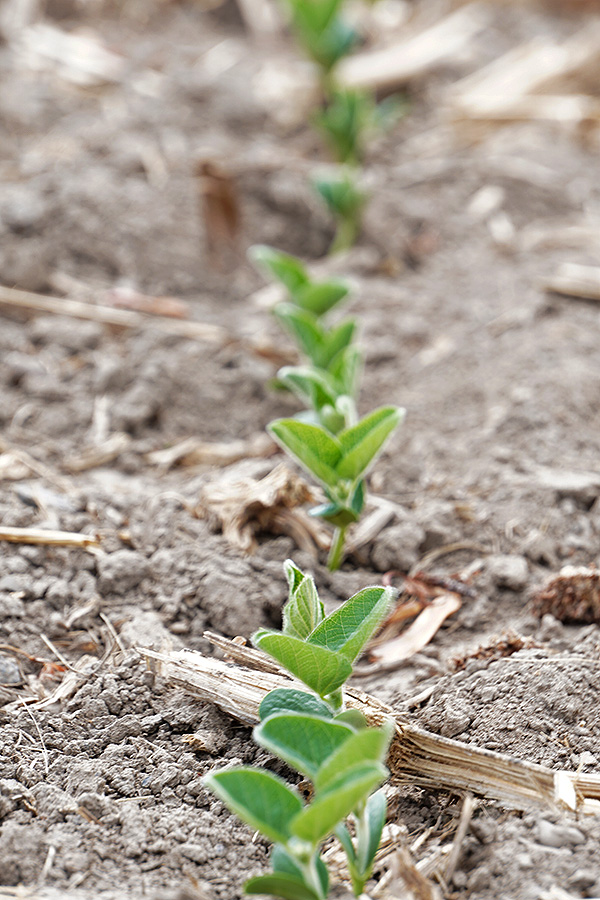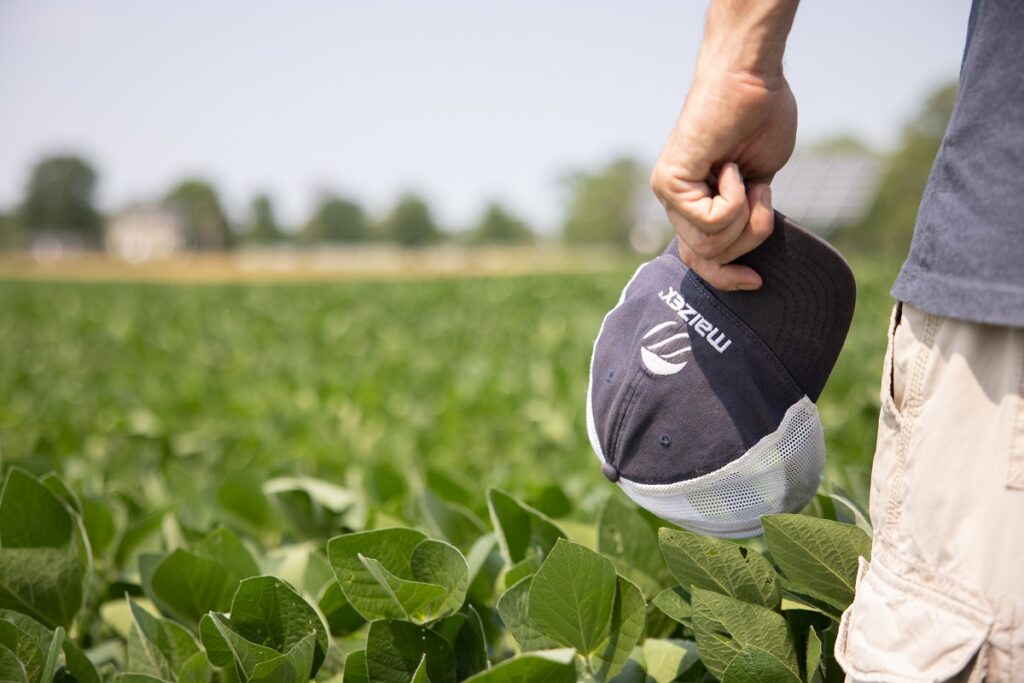Smart Soybean Selection
August 1, 2023 | Category: Agronomy |Looking for guidance on how to pick the right soybean for your farm? It’s no wonder! In the past, life was a lot simpler: there were conventional soybeans and glyphosate-tolerant soybeans. Today, however, that’s not the case. Now we have conventional, identity-preserved soybeans. We have Xtend soybeans, tolerant to glyphosate and dicamba. We have XtendFlex soybeans, tolerant to dicamba, glyphosate, and glufosinate. And we have Enlist E3 soybeans tolerant to 2,4-D choline, glufosinate, and glyphosate.
This means we must weigh our options according to what our weed spectrum is, the varieties available in a given herbicide platform, and market opportunities. In cases where there is a lot of resistance with weeds like giant ragweed, waterhemp, and fleabane, platforms like XtendFlex and Enlist have a strong fit. Conventional beans especially are very challenging to grow with problem weeds and resistant weeds. Xtend beans will also have their challenges as the weather and environment need to be right if you want to burn down your fields with dicamba. Both Enlist and XtendFlex give you an in-crop opportunity to get some of those problem weeds. If waterhemp is a big issue though, Enlist is still likely one of your best options, and 2,4-D choline and Liberty are both very safe to spray in-crop. Additionally, picking the right platform may come down to what your neighbours are growing. If they grow grapes or tobacco, Enlist beans may be a good fit as there are fewer herbicide drift and volatility concerns.

Once the platform is picked out, how do we narrow in on a variety? First, ask yourself what harvest timeline you want and whether you are going to plant wheat. If you plan to grow wheat, you need to pick an adapted maturity that allows you to harvest and plant your wheat on time. For example, a grower in Woodstock, Ontario, may choose to grow 1.5 RM soybeans without considering wheat planting, but that grower may alter the variety selection and choose a 1.0 RM in a year when wheat is planned for, as soybeans from 1.0–1.5 RM are adapted for that area. In contrast, if harvest timing is not a concern and you don’t need to follow your crop of soybeans with wheat, you have the ability to choose later varieties—or, if you plan to plant early and harvest late, slightly later than adapted varieties—to maximize flowering and yield potential. For example, growers in Haldimand and Niagara often grow soybeans between 1.5–2.5 RM, but when wheat is not a concern and planting can be timely, they often push to varieties at 2.7–3.0 RM.
Now that you have decided on the platform and maturity, how do you choose bean A from bean B? Well, we start at the gold standard: yield. Always choose the highest yielding bean for your area with balanced agronomics. We can use local data derived from both large, field-scale trials, strip trials, small plot trials, and even government trials to decide what varieties have reasonable yield potential and the potential to be a high-yielding variety. Then we dial in the agronomics, which means the traits or phenotype one variety has against disease and how it responds to field or soil conditions and the environment. For example, agronomics include white mould susceptibility, phytophthora field tolerance and genes, emergence scores, standability, stature, pod height, sudden death syndrome (SDS) susceptibility, and soybean cyst nematode (SCN) traits.
If SCN and SDS are your largest obstacles, you should choose a variety with good SDS tolerance and the proper SCN trait for that field. It would be good to know your SCN races and use that in your decision-making as well. It is suggested that, following a Peking cyst variety, a PI88788 variety should be planted as a way to break the cycle of resistance, since it is a different resistance gene and expresses differently in each plant.
For those in Eastern Ontario and Quebec, standability, wide-row adaptability, and white mould should take priority in picking the best variety. In some cases in 2023, varieties that only had average yield potential in low white mould environments were 10+ bushels better than the average in high white mould conditions.
In heavy, clay-based soils with poor drainage, I often start by looking at phytophthora genes and field tolerance. Varieties with stacked phytophthora, like Typhoon E3 and Avalanche XF, are good fits both with 3a and either 1c or 1k, but Typhoon E3 has excellent emergence, so I may favour it over Avalanche XF, which has average emergence, since crusting may be a concern. It is important to know that, with phytophthora genes, 3a is one of the strongest and, depending on your races, you may have some genes that may not offer much protection. Additionally, sometimes field tolerance is most important as the genes take time to express under some circumstances.
Finally, in heavy or light soils, I may opt for a large-statured variety to help fill in the rows, establish canopy, and conserve moisture. But on some of the most fertile loams, I might opt for a compact variety with strong standability. Remember that more than yield and herbicide tolerance need to be considered. In the end, while the agronomics don’t create yield, they do protect yield. When conditions aren’t ideal, varieties with good agronomics will steady the ship and give you some insurance of consistent yields.
At the end of the day, Maizex has varieties to fit everybody’s needs. Reach out to me or your local Maizex representative, and we can tailor an offering that suits your farm’s needs best.

__________
Henry Prinzen, CCA-ON
Market Development Agronomist
